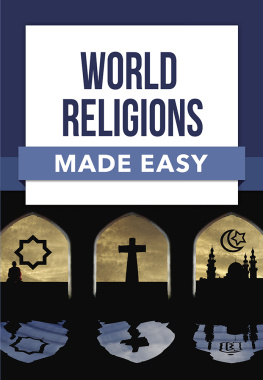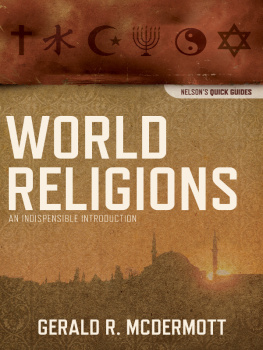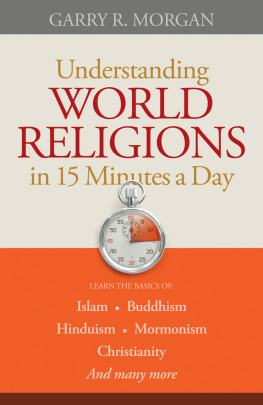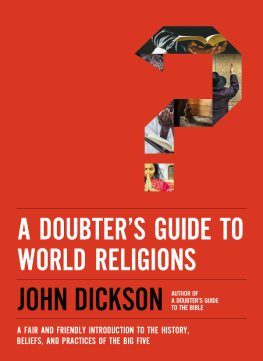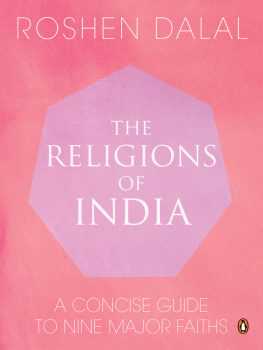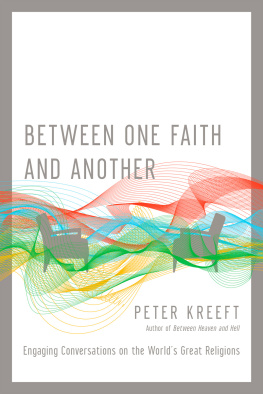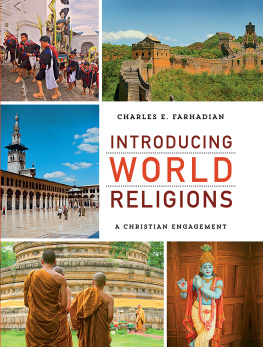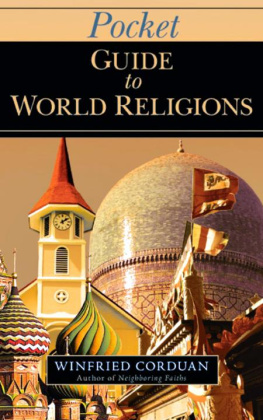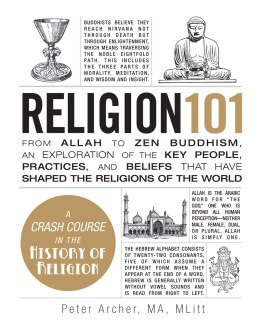Instant Expert: World Religions

Text copyright 2013 Joanne OBrien and Sandra Palmer
This edition copyright 2013 Lion Hudson
The right of Joanne OBrien and Sandra Palmer to be identified as the authors of this work has been asserted by them in accordance with the Copyright, Designs and Patents Act 1988.
All rights reserved. No part of this publication may be reproduced or transmitted in any form or by any means, electronic or mechanical, including photocopy, recording, or any information storage and retrieval system, without permission in writing from the publisher.
Published by Lion Books
an imprint of
Lion Hudson plc
Wilkinson House, Jordan Hill Road,
Oxford OX2 8DR, England
www.lionhudson.com/lion
ISBN 978 0 7459 5576 6
e-ISBN 978 0 7459 5784 5
First edition 2013
Acknowledgments
Scripture quotations taken from the Holy Bible, New International Version, copyright 1973, 1978, 1984 International Bible Society. Used by permission of Hodder & Stoughton, a member of the Hodder Headline Group. All rights reserved. NIV is a trademark of International Bible Society. UK trademark number 1448790.
The Apostles Creed and the Lords Prayer as they appear in Common Worship: Services and Prayers for the Church of England (Church House Publishing, 2000) are copyright The English Language Liturgical Consultation and are reproduced by permission of the publisher.
A catalogue record for this book is available from the British Library
Cover image Scott Stulberg/Corbis
Contents
Introduction
Over two-thirds of the worlds peoples profess allegiance to a religion. This book is a snapshot of the beliefs and practices of eleven religions, although we recognize that for some adherents religion is a cultural identity rather than a way of life. As there are too many religions in the world to accommodate them all in a small book, we have chosen those with wide historical and religious significance, rather than using the number of followers as our sole criteria for inclusion.
In order to give a glimpse of the breadth and complexity of religions in a book of this length, we have chosen to write about some in greater depth than others. This decision does not reflect the impact or importance of the religions that we have written about more briefly.
Different religions have different ways of calculating and dating the year of an event. The designations BC (before Christ) and AD ( Anno Domini , in the year of the Lord) reflect a Christian perspective, and we have decided to continue with these abbreviations, as they are widely used, rather than using BCE (Before the Common Era) and CE (Common Era).
The Bah Faith
Followers of the Bah Faith, known as Bahs, believe that God has been revealed at different times through different prophets. Each revelation was relevant to its particular place and time. For this present age God sent the prophet Mirza Husayn-Ali Nuri, born in 1817, now known by his religious title of Bahullh the Glory of God. As the world changes and progresses, Bahs believe that all people should be united, not divided by nation, race, and religion.
There are around 5 million Bahs in communities spread throughout the world. They are governed through local and national elected bodies called Spiritual Assemblies. They also have a world-governing council that is based at the Bah World Centre in Haifa, Israel. This is called the Universal House of Justice.
Beginnings
The Bah Faith began in the middle of the nineteenth century in Iran (Persia) with the visionary dreams and subsequent teachings of Siyyid Ali-Muhammad Shirazi. He was born in 1819 into a Shia Muslim family.
As a young man Siyyid Ali-Muhammad felt that the spirit of God had entered and inspired him and in 1844 announced that he was a Bb or gate. In Shia tradition this is a way in which God communicates with humanity. His teachings attracted a wide circle of followers, but his religious claims also brought strong opposition. He was executed by firing squad in 1850. Before his death, he declared that a new prophet would arise Bahs believe that Bahullh is this new prophet.
Bahullh followed the teachings of the Bb, which led to his imprisonment in 1852. He had a series of mystical visions in prison that revealed his divine mission. In 1863 Bahullh finally declared to his close followers that he was the promised one the new prophet. He was exiled to the city of Acre in present-day Israel where he continued to write and teach. Bahullh died in 1892 and appointed his son, Abdul-Bah, as his successor.
Scriptures
The writings of the Bb and Bahullh are believed to be divinely revealed. These form the scriptures along with the writings and transcribed talks of Abdul-Bah. Many Bahs also read the scriptures of other faiths for religious enlightenment, but they are not binding on Bah belief and practice.
Unity of all people
The earth is but one country and mankind its citizens.
Bahullh
Because of their belief in the unity of all people, Bahs campaign to promote equality and economic justice. They also work towards providing equal access to education, regardless of class and race. Bahs are often involved in grassroots initiatives in their home towns and villages as this is an expression of faith in action.
Bah prayer and worship
Bahs meet informally at devotional meetings and study circles. These are an opportunity to pray, share spiritual experiences, and develop friendships in the local community.
The Bah community has also built seven Houses of Worship, at least one on each continent. Although they have distinctive designs, they also have the unifying feature of nine sides and a central dome. The newest House of Worship, completed in 1986 in New Delhi, is the shape of a lotus flower. These places of worship are open to people of all religions, and there are no clergy or set rituals.
Buddhism
Buddhism aims to help people find a way to let go of attachments that make them unhappy, such as fear, greed, or regret. It offers a path to understand the cause of suffering and to find release from it. Through careful reflection people can have a clearer view of why they feel, act, and react in the way they do they start to understand the effects of their feelings and actions.
In order to find happiness, Buddhism teaches that it is necessary for people to look first within themselves. With guidance, practice, and knowledge, this leads to increased kindness and compassion to all living things and, in turn, to increased wisdom. Buddhists believe in an endless cycle of death and rebirth, and the final aim of the Buddhist path is for individuals to break the ties of rebirth and find release from suffering.
Beginnings
Siddhartha Gautama, who was born in northern India around the end of the sixth century BC , sought an answer to the cause of suffering and the path to liberation from it.
According to tradition, he was born into a wealthy family and protected from the hardships and realities of everyday life, but he began to think about life beyond his privileged background. One story tells how he asked his fathers charioteer to take him to the nearby city. On the journey he witnessed sickness, ageing, and death for the first time. He also saw the inner calm of a wandering ascetic, a man who had renounced earthly belongings to follow a religious and spiritual quest.
Deeply affected by what he had seen and disillusioned with his wealthy life, he left home and became an ascetic, seeking to understand the nature and cause of suffering and death. According to traditional reckoning, he was twenty-nine years of age. He studied with various teachers, and at one stage he practised extreme austerities for six years he ate and drank just enough to stay alive but he still could not find the answer.



